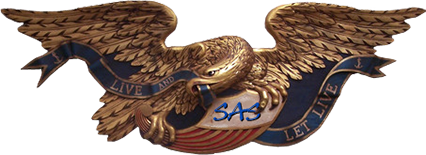I should think that in a busy scenario, such as AAA fire from a carrier group, the additional polygons conforming the 'straight' line texture to the squiggly texture would have some impact. Two such components instead of one would result in a near doubling of the polygon count in the mesh.
Now, we already have a means at hand by which to mitigate this. And that is the distance limits we can apply to the '3D' tracers via conf.ini entries, separately for the player, other aircraft, ground unit and Wirbelwind emitters.
A given field of view contains a volume of space we might simplify as a 'rectangular pyramid' whose apex is the viewpoint. (Our 'pyramid' has as a base a section of a sphere, but we can simplify to a flat base for the following.) If that volume were to contain a more or less uniform density of tracers out to the draw distance limit, the number to draw as we reduce that distance limit would decrease as the volume, NOT linearly as the distance, because volume is a cubic function.
For instance. One might first assume that halving the draw distance limit would halve the number to draw. But a moment's consideration of our pyramidal view volume will show the falsity of that assumption. If we slice off the bottom of a pyramid halfway between base and apex, we remove 7/8 of its volume. To remove half the volume we would slice away the lower 1/5. And so if the draw distance limit were to be 100m, lowering it to 80m would halve the number to draw.
Now, this is assuming uniform spatial density within the full volume set by the field of view. For wider FOVs this is increasingly unlikely, as the larger volume will tend to include clumpings of tracers within largely empty sky. And so on average the number of tracers to draw will halve when the draw distance limit is reduced to somewhere between 50% and 80% of the current limit. Perhaps we could use 2/3, or 66%.
I've also been pondering the use of LODs, with at least one additional, simpler mesh for the longer view distance. By way 9f example, the lightning bolt effect has 5 LODs, where the bolt thickness increases with each increase in view distance. A good part of my reasoning derives from the impact of FOV on tracer appearance. At wider FOVs the tracer can easily have a width of less than one pixel, which undersampling causes a jagged, 'shimmering' appearance. The transition from this overly thin representation to the simple but more definite 2D line is unsatisfactory. At more zoomed-in FOVs the reverse occurs, where the thick 3D line is suddenly replaced by a much less prominent thin line.
The use of LODs has the advantage of accounting for the apparent size of a mesh (the number of pixels it occupies) as the FOV varies. The draw distance of any particular LOD increases as the FOV decreases. Judicious setting of LOD values can ameliorate the current discontinuities just outlined.
In this way it could be possible to have the 3D tracer lines drawn to greater distance when zoomed in and thus showing fewer tracers in general. At wide FOVs the simpler mesh will be in effect at a fairly near distance limit.
In short, the current hard distance limit is not really suitable for varying FOV and differing screen resolution. If all players had the same screen resolution and were stuck with just one FOV setting, this would be perfectly fine. But a dynamically determined draw distance based on screen pixel count and FOV has decided advantages. Will this introduce a deleterious impact?
I think I'll work up a first test for just one tracer color, probably red, to get a feel for things...
 Author
Topic: Would it be worthwhile to add a horizontal component to the guncam tracer mesh? (Read 270 times)
Author
Topic: Would it be worthwhile to add a horizontal component to the guncam tracer mesh? (Read 270 times)


